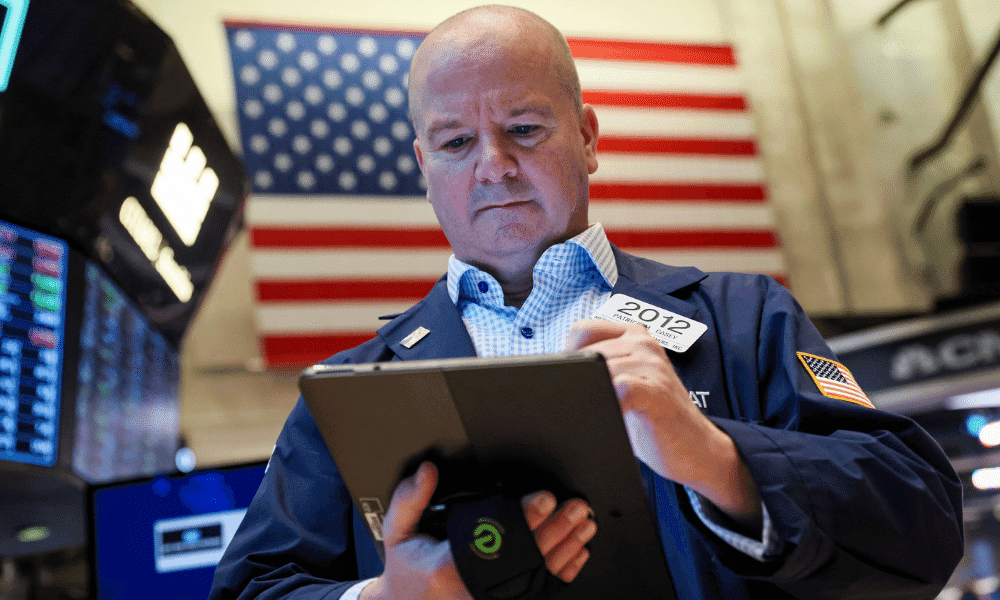
The U.S. jobs report for March is coming up on Friday and will be closely watched.
Being the last monthly employment report ahead of the Federal Reserve’s next meeting in May.
Ahead of that, there will be an update on inflation in what is set to be a busy week on the economic calendar.
Developments in Ukraine and oil prices will also continue to shape market sentiment as the first quarter draws to a close, Here’s what you need to know to start your week.
1. Nonfarm payrolls
Friday’s nonfarm payrolls report for March could help markets get a sense of whether the Fed’s roadmap for rate hikes is too aggressive or not aggressive enough.
Economists are expecting the U.S. economy to have added 475,000 jobs after 678,000 were created in February.
Average hourly earnings are forecast to increase 5.5% on a year-over-year basis, while the unemployment rate is expected to tick down to 3.7%.
Indications of continued strength in the labor market would underline the case for a more aggressive pace of rate hikes as the Fed battles to curb soaring inflation.
The Fed hiked rates by a quarter percentage point on March 16 but since then-Fed Chair.
Jerome Powell has indicated that the central bank is prepared to raise rates in half-point increments if it is warranted, despite fears that this could trigger an economic downturn.
2. Inflation data
Ahead of the jobs report, the U.S. is set to release February figures on personal income and spending on Thursday.
The report contains personal consumption expenditures data, a gauge of inflation closely watched by the Fed.
Economists are expecting the core PCE price index to rise 5.5% on an annual basis, staying well above the Fed’s 2% inflation target, the economic calendar also features updates.
On consumer confidence, job openings, private-sector hiring, jobless claims, and the ISM manufacturing PMI In addition, New York Fed President John Williams.
Philadelphia Fed head Patrick Harker, Atlanta Fed President Raphael Bostic, and Richmond Fed President Thomas Barkin are to make appearances during the week.
3. Oil prices
Oil prices notched up their first weekly gain in three last week, with Brent up more than 11.5% and WTI gaining 8.8%.
Oil prices have spiked - rising 50% since the start of the year - amid sanctions on major supplier Russia in retaliation for its invasion of Ukraine.
Rising oil prices have been fueling inflation expectations, burying the hopes of global central bankers that the inflation stoked by pandemic-era stimulus packages would be transitory.
Jerome Powell said last Monday that the U.S. economy is clearly better able to withstand an oil shock now than in the 1970s. The U.S. is the world’s largest oil producer.
But this didn’t stop Powell from striking a tougher note on inflation (see above) than he had at the press conference after the Fed hiked rates just days earlier.
4. Stock market
Wall Street's three main indices ended last week higher, with the Nasdaq and the S&P 500 rising 2% and 1.8%, respectively, while the Dow managed a 0.3% uptick.
U.S. Treasury yields jumped on Friday, with the benchmark 10-year note surging to nearly three-year highs, as the market grappled with high inflation and a Federal Reserve.
That could easily spark a downturn as it aggressively tightens policy.
The equity market is pricing in a higher rate environment, Keith Buchanan, portfolio manager at Globalt Investments in Atlanta told Reuters.
That is causing bank stocks to outperform, while "adding more pressure to the riskier elements of the market," such as growth shares, he said.
Trending News
U.S. Futures Edge Higher Biden Fed Speakers And Big Tech In Focus!
Exclusive-EU Nations To Exchange Refugees Hryvnias At Ukraine Cenbank Rate Draft Document!
Shares Oil Volatile Ahead Of NATO Russia-Ukraine Summit!
5. Eurozone inflation
The Eurozone is to release inflation data on Friday with economists expecting CPI to hit a new record high of 6.5% amid soaring energy costs.
The European Central Bank has indicated that there’s no rush to raise interest rates but given its inflation target of 2%, it’s no surprise that some officials are calling for one or two rate hikes this year.
A strong inflation reading will bolster their argument.
But bond markets suggest higher rates are coming, having priced five moves of 10 basis points each by year-end.
Germany's two-year bond yield has risen 30 basis points so far in March, set for its biggest monthly rise since 2011.
Having spent years deep in negative yield territory amid ECB bond buying to boost inflation, it is fast approaching 0%. - INVESTING